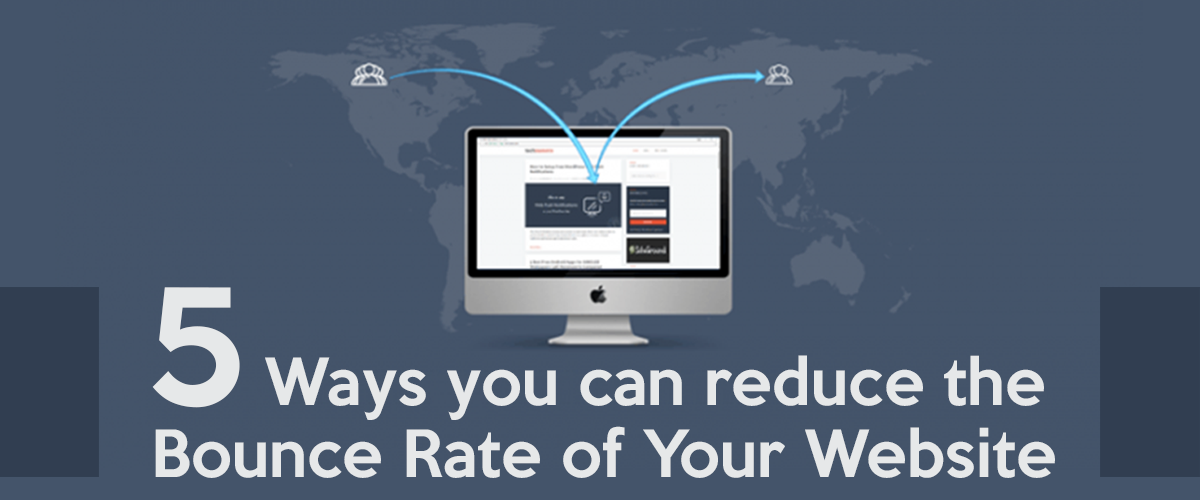5 Ways to Reduce the Bounce Rate of your Website

- February 2, 2018
- Digital Marketing
Bounce rates are considered to be the darker side of owning a website as a high recoil rate leaves a negative impact on the image of your company. Bounce rates vary from website to website, but an average bounce rate estimated by KissMetrics is 40.5%. Different websites belonging to diverse fields are seen with the following rebound rates;
Retail sites – 20 – 40%
Content sites – 40 – 60%
Service sites – 10 – 30%, and so on.
Is the Glass half empty or half full?
The glass half empty side of bounces is they are a disappointment to the website and leaves a harmful effect on the illustration of the company’s prestige but the glass half full side of bounces is they can indicate that something should be fixed on your site, regardless the fact what needs to be changed if it is the navigation tools, the layout of your website, targeting tactics, etc. Such measures can come in handy while reducing the bounce rate of your website.
- Trim down the Load Time of your Landing page
One of the most eminent factors for high bounce rate is the time it takes for a page to load. Keeping the attention of the targeted audience is comparatively difficult than making the user click on your website. Out of all the problems that lead to a high bounce rate, delay in the loading of the page is one of the main factors. Unbelievably, 40% of the users expect the page to load within 20 seconds and if not, it is likely for them to abandon the site.
If the load time of the page is considerably less, the time spent on the page of the user may increase.
- Use CTAs to guide your users to additional pages
When a user visits your landing page there should be clear Calls to Action that guide them to different pages pertaining to their interest. A CTA serves as a guide that directs the visitor towards their next step. For instance, if a person selects a product to buy but what will guide that person to the checkout process? That’s where a Call to Action comes in handy. Try to give the user an easy to access the website. It increases the conversion rate of your website while decreasing the bounce rate of your website.
- Tailor the format of your content as per the needs of the visitor
Let’s assume that this article was not in the form of key points but in the form of a lengthy paragraph, would the targeted audience read the whole article if the average time span of a user on a web page is barely 5 seconds?
Format the whole content with the perspective of a user’s needs and preference. Users do not like to scroll through heavy-content, they need to get as much as they can within as less time as possible. Keep your content precise and digestible within a few seconds.
- Accurate landing pages
Try to direct the visitor to an accurate landing page which will increase the likelihood of the visitor finding the content they are looking for. If you’re conducting a webinar, make sure to land the visitor on a page (which isn’t your homepage) that has relevant information regarding the webinar. Regardless of the number of landing pages your website has, make certain that they are optimized to validate the positive feedback of the targeted audience.
- Appropriate Meta descriptions
Make changes in your Meta description, your Meta description should be detailed and well defined by the services you deliver. Don’t oversell your website by writing about the services you cannot deliver, as long as your description is in harmony with the services you deliver, your bounce rate will remain subpar.
- tags


Leave a Reply
You must be logged in to post a comment.